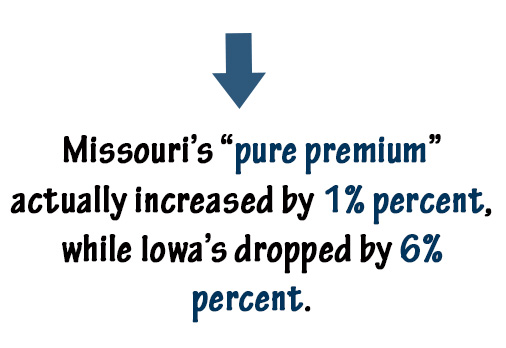The New York University Law School’s Center for Justice & Democracy released an updated version of its briefing book, Medical Malpractice: By the Numbers, on September 17.
The book provides a comprehensive look at research and statistics related to medical malpractice issues in the U.S. It also includes links to all of the original sources that are cited by the book’s authors.
You can download a free PDF copy of the book by going here.
The research and statistics cited in the book help to debunk many “myths” about medical malpractice that are often advanced by those who seek to limit patients’ rights to take legal action after they have suffered serious harm due to medical errors.
Here is a look at five of those myths:
#1 – Too many “frivolous” medical malpractice lawsuits are filed, clogging our courts.
The book quotes a Johns Hopkins University School of Medicine study stating, “Only about 1 percent of adverse events due to medical negligence result in a claim.”
Additionally, the book points to a 2011 study by the National Center for State Courts, which found that medical malpractice cases represented less than 2 percent of the incoming civil cases that the NCSC tracked in 12 states.
As Victor Schwartz, General Counsel for the American Tort Reform Association is quoted as saying in 2011, “It is ‘rare or unusual’ for a plaintiff lawyer to bring a frivolous malpractice suit because they are too expensive to bring.”
#2 – Medical malpractice litigation forces doctors to practice “defensive medicine” and raises healthcare costs.
The book highlights a study published in 2012 by researchers from the Northwestern University Law School and Kellogg School of Management, finding that severe tort reform measures in Texas (such as placing caps on the amount that injured patients could recover) had “no material impact on Medicare spending … no matter how we slice the data.”
Furthermore, the book quotes a 2009 report by Americans for Insurance Reform stating, “In over 30 years, medical malpractice premiums and claims have never been greater than 1 percent of our nation’s healthcare costs.”
Additionally, the book includes references to an April 2014 Chicago Tribune and Kaiser Health News investigation. According to that report, doctors may be more motivated by revenue than liability when they order certain tests and treatments. For example, one orthopedic doctor stated that “too many surgeons operate on simple fractured collarbones, inserting metal plates, rather than letting the injury heal with the help of a sling.”
#3 – Many doctors are leaving states due to the need to pay high medical malpractice premiums, causing a healthcare “crisis” in some parts of the country.
In fact, several studies noted in the book confirm that neither medical malpractice premiums nor tort reform measures have affected the nation’s supply of doctors.
For instance, a 2007 study by the Harvard School of Public Health found that only a small percentage of doctors in Pennsylvania eliminated “high-risk” procedures in their practice during a time when malpractice premiums soared in that state.
Interestingly, the book refers to a 2012 survey by the University of Albany’s School of Public Health. In that survey, newly trained doctors gave the following as their main reasons for deciding to practice outside of the state of New York:
- Better jobs in desired locations outside New York (12%)
- Better jobs outside New York that met visa requirements (11%).
The “cost of medical malpractice insurance” sat at the bottom of the list.
#4 – Tort reform measures reduce medical malpractice insurance costs for doctors.
The book cites to a 2014 Milwaukee Journal Sentinel report, finding that the U.S. medical malpractice insurance industry actually “posted an underwriting profit for the eighth straight year” in 2013. Many of those profits were being passed on to doctors and hospitals in the form of reduced premium rates, the report noted.
Additionally, the book cites a 2009 study by Americans for Insurance Reform that compared the malpractice insurance premium rates in two states: One with tort reform measures, Missouri, and one without such laws, Iowa. The study found that, during a five-year period that researchers examined, Missouri’s “pure premium” actually increased by 1 percent, while Iowa’s dropped by 6 percent.
#5 – Doctors fail to report medical errors due to a “fear of litigation.”
Actually, as a 2012 report by the U.S. Department of Health and Human Service quoted in the book found, fear of being sued is not the leading reason why medical errors often go unreported. Instead, it is problems with reporting systems within hospitals, including “widespread employee failure to recognize patient harm.”






